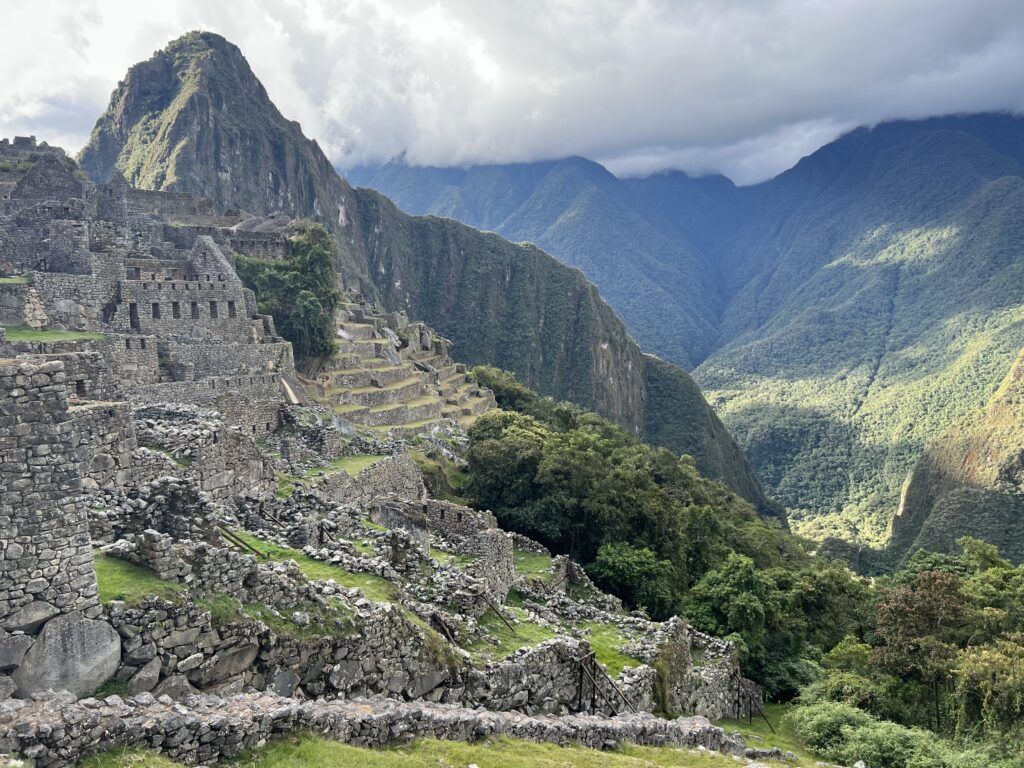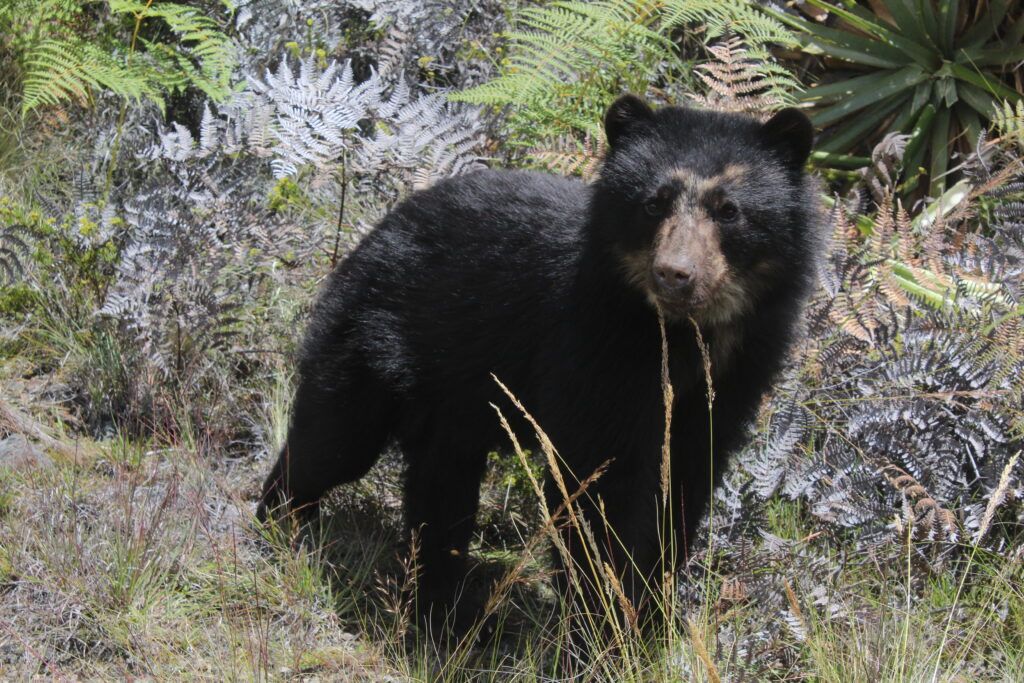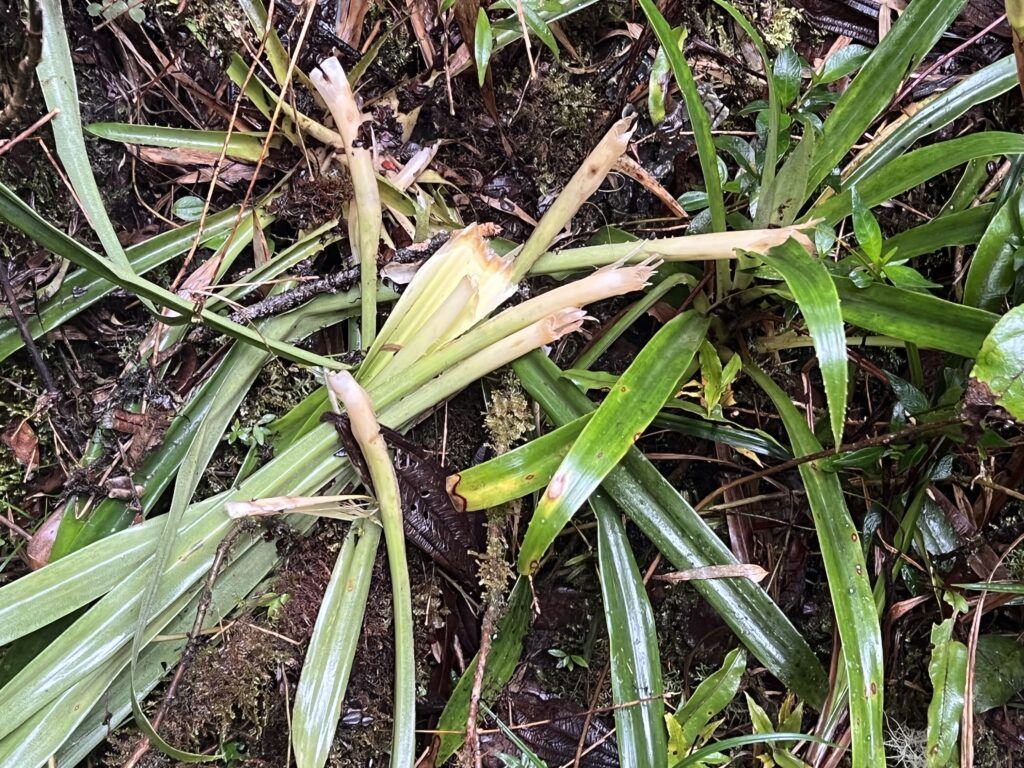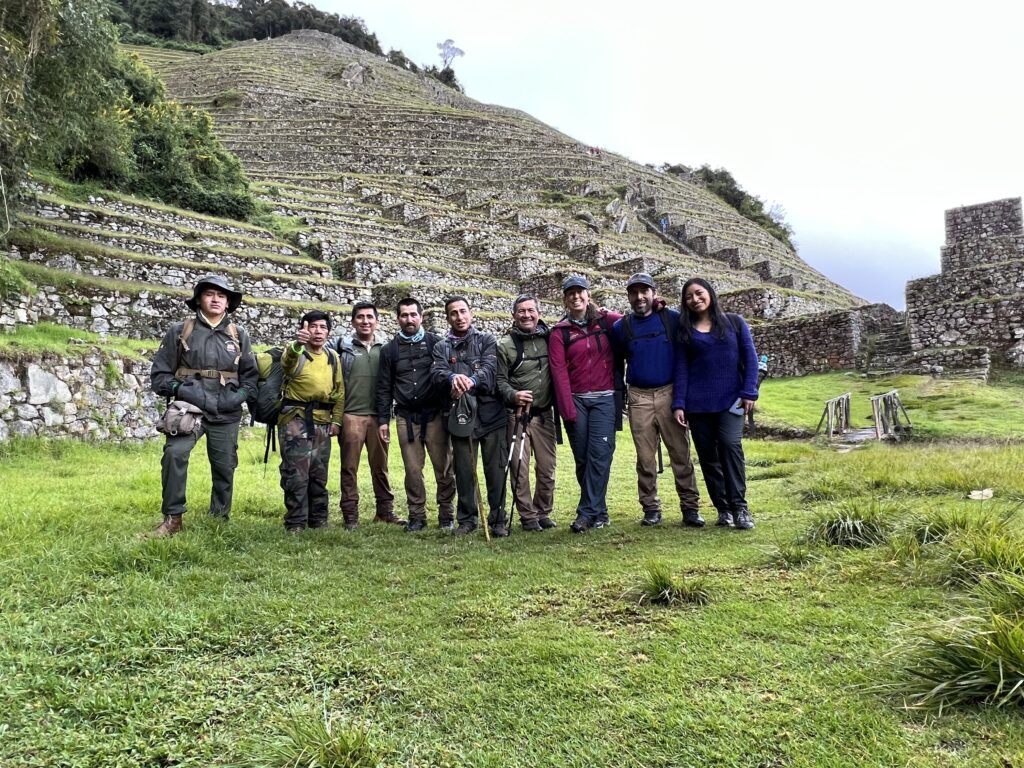The team bushwhacked their way through the forest, navigating well-worn Inca trails until broad stone walls materialized out of the fog. The trail guided them to archeological ruins tiered into the Andes mountains, not far from the world-famous Machu Picchu. Feeling more like explorers than conservationists, the group from Spectacled Bear Conservation (SBC), accompanied by park guards, canvassed the area for signs of bears. Pushing through the mist, they found trees scarred with claw marks and cradling matted piles of bromeliad leaves—a bear’s sleeping nest. Given the area’s size and variety of food sources, SBC thinks this could be one of Peru’s core bear habitats, home to one of the densest spectacled bear populations. SBC is learning everything possible about these bears to protect them and the unique habitat they share with ancient landmarks.
Machu Picchu is a World Heritage Site visited by thousands of people each day. It is the crown jewel of architectural relics left by the Inca Empire, the largest civilization in the pre-Colombian Americas. Nestled high in the Andes and surrounded by a cloud forest, Machu Picchu is not only a cultural site, it’s also rich in biodiversity. This forested national park is contiguous with the Amazon and boasts four different ecosystems along its steep mountain gradient. It is ideal habitat for spectacled bears, but little is known about the bears living there.
This year, SBC began working with the Peruvian government to determine the status of Machu Picchu’s bears and the health of these ecosystems by gathering baseline data through camera traps and by collaring bears. These are the first steps in SBC’s long-term research which will determine the population size and health of the bears, how they use and move through the forest, their major threats, the impacts of tourists, and how much habitat they need. Over time, SBC’s work will expand into community programs and their field monitoring will inform conservation actions, creating a huge impact for bears. In the next two years alone, SBC will have sufficient data to mitigate natural threats and help Peru’s government minimize the tourist impact on the park.
Habitat loss poses a serious risk to this area. The land near Machu Picchu is so valuable that people are selling it to developers for hotels and other tourist services. Studies show that at the current rate of loss, 90% of the wild space surrounding Machu Picchu could be stripped bare in less than a decade. To prevent this, SBC wants this area to be declared a UNESCO Biosphere Reserve—protecting a million acres of land—and they’re in the beginning phases of this plan with the Peruvian government. SBC is also using its data to work with the Indigenous community to create a protected area adjacent to Machu Picchu.
Bears roamed these peaks alongside the Incas and all the people who came afterward, SBC wants to ensure their future stretches as far as their past. Their research will form the basis of a conservation plan for Machu Picchu that will protect these bears and the entire cloud forest for centuries.





